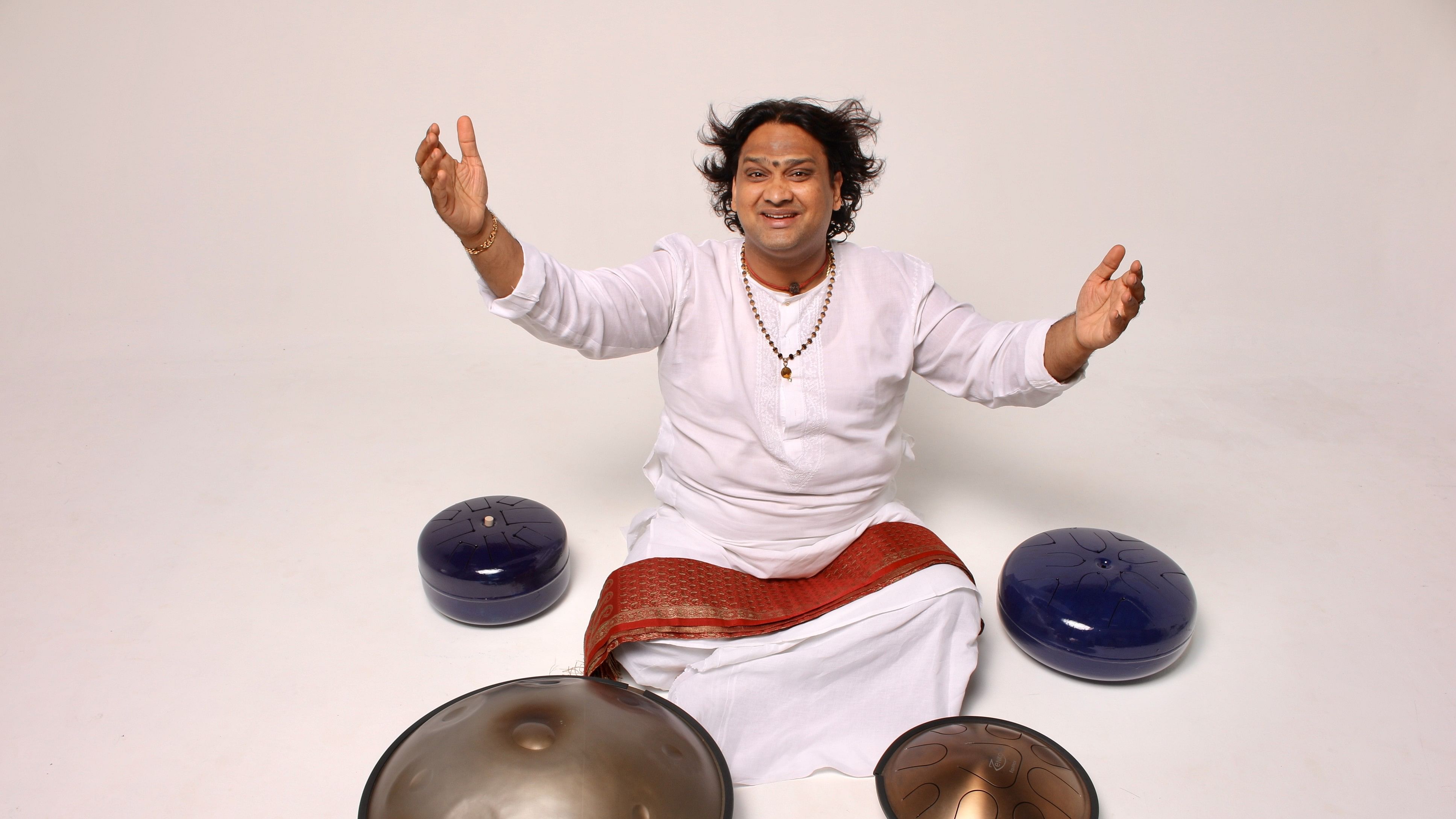
Mahesh Vinayakram.
Mahesh Vinayakram, who comes from the illustrious family of ghatam legend Vikku Vinayakram, began as a solo vocalist when he was 12 and went on to perform alongside legendary musicians such as Ustad Zakir Hussain, Talvin Singh, George Brooks, and James Asher, among others. He is the first Indian singer to perform in the theatre Cirque du Soleil; has several albums to his name; works on music therapy; has won several awards, including a UNESCO Award; and performs with his father and siblings as part of their family band, Sapthaakshara.
In Bengaluru recently to conduct a masterclass, Mahesh spoke to DHoS. Excerpts
You belong to a legendary musical family. Boon or bane?
Of course, it is both a plus and a minus. The plus point is that the strong background and the grammar I grew up imbibing greatly helped me explore music in its many forms all over the world. The minus point is that the expectation is so much more, and I have to constantly match it.
You have performed with dance productions like Charishnu, with Leela Samson, with an Indo-Israel band, at Cirque du Soleil and even done rooftop concerts...tell us more.
Charishnu is one of the productions led by Leelaji — it has five leaders for five dance art forms; I am one of the leaders for the percussion group. We went as delegates of the Ministry of Culture.
Besides that, I have been working in the Cirque du Soleil — I am the first Indian to be cast in it — I did 325 shows in 345 days; it was a touring show, in Canada and the US. This was a great experience as I could introduce Indian music to a completely non-Indian audience. Coming from a traditional background and a Karnatik set-up and working on stage with super talents — to experience something like that, the finesse, the artistry, and to do the same thing every day became yogic. I had to adapt to a completely different lifestyle without losing my ethics and without losing myself and who I am. It was a very interesting journey.
You have sung for both Bollywood and Hollywood and have independent albums to your name... any new productions on the anvil?
I sang my debut song in Vettaikaaran — Puli Urumudhu for Vijay Anthony, then very recently with A R Rehman for Ponniyin Selvan-1, I did the Konnakol part and sang with Shreya Ghoshal. I have sung a song for Rehman sir for a Hollywood production — singing for him is a completely beautiful experience. Besides these, I have released 104 single albums on my own label — they are available on all digital platforms. What I could not do in 18 years, I could do in 18 months during the pandemic. I started releasing my own albums sitting in Chennai and distributed them in 18 countries, on all major streaming online platforms.
You call your brand Karna-tech. Is this an acknowledgement of the popularity of fusion music and the social media presence every musician must have today?
I am very social media friendly and I have a presence on all popular platforms, which I dynamically use and post. I also have my official YouTube channel — all my music is distributed through that. Being social media friendly is an important factor for independent artistes like me — I have happily accepted the digital migration; it is where I share my music and let my audience enjoy it. Karna-tech essentially signifies a digital approach to Karnatik music.
Can you speak about your work on therapeutic music?
Music by itself is therapeutic and each raga has its own effect. Every raga has its guna and by adding one note, the tone changes. I am doing a paper on the relation ragas have with our nervous system. I have already done a couple of therapy sessions at the Eberhard Karls University of Tubingen, Germany with Prof Klaus Fesmann and hope to do more.